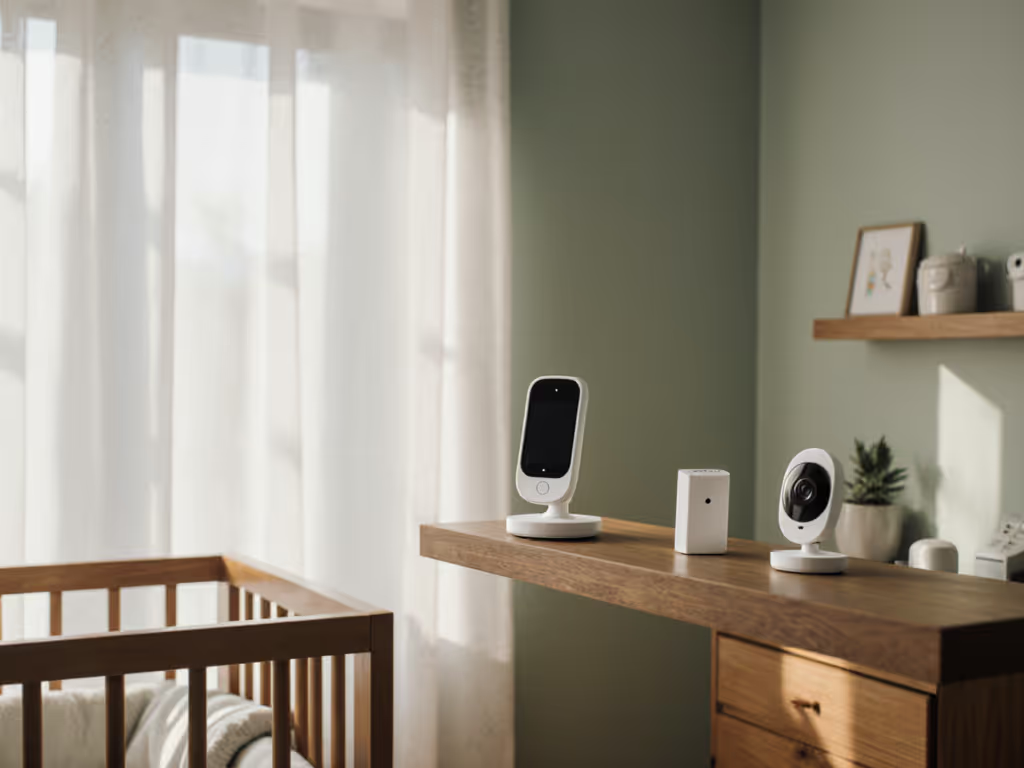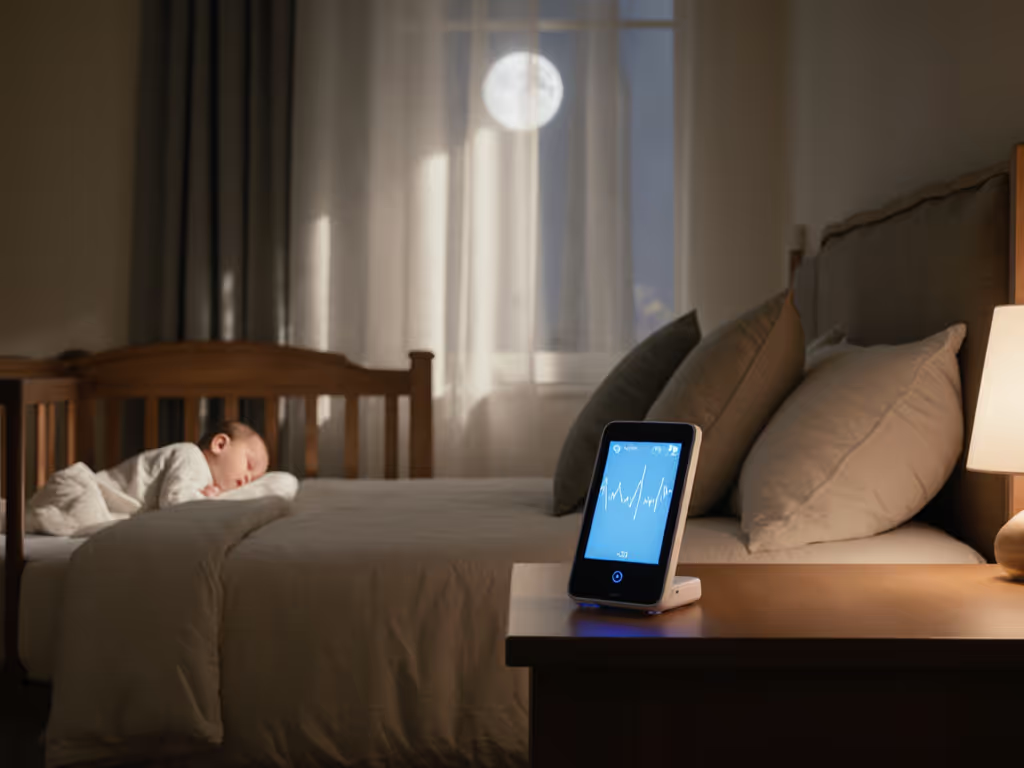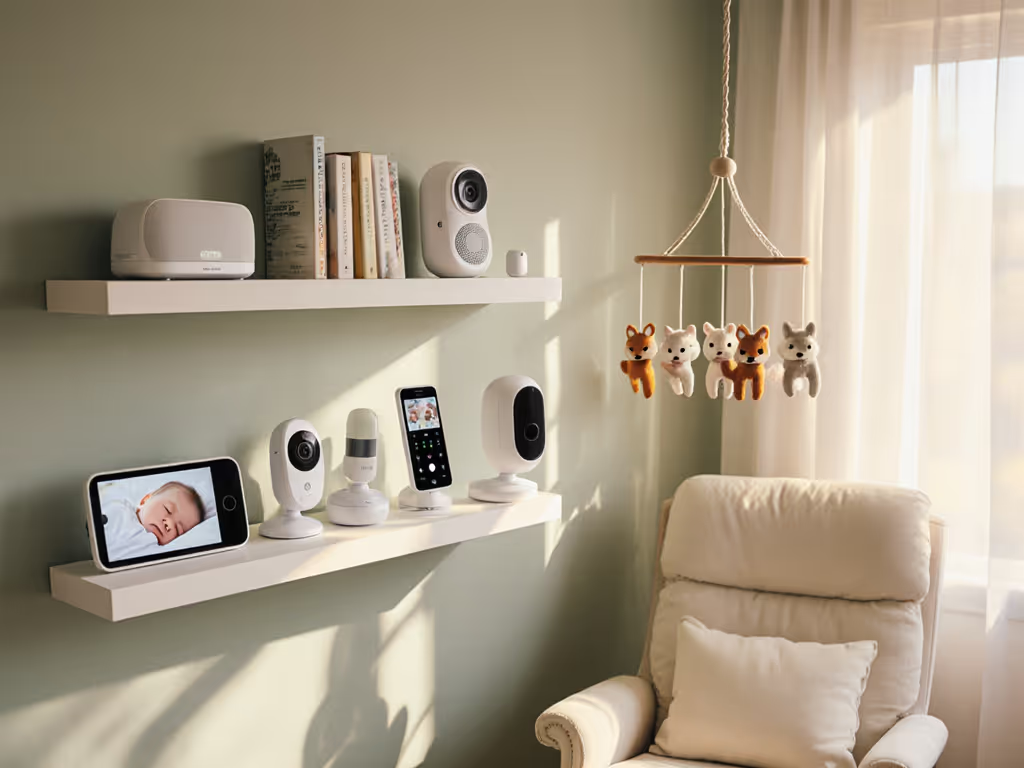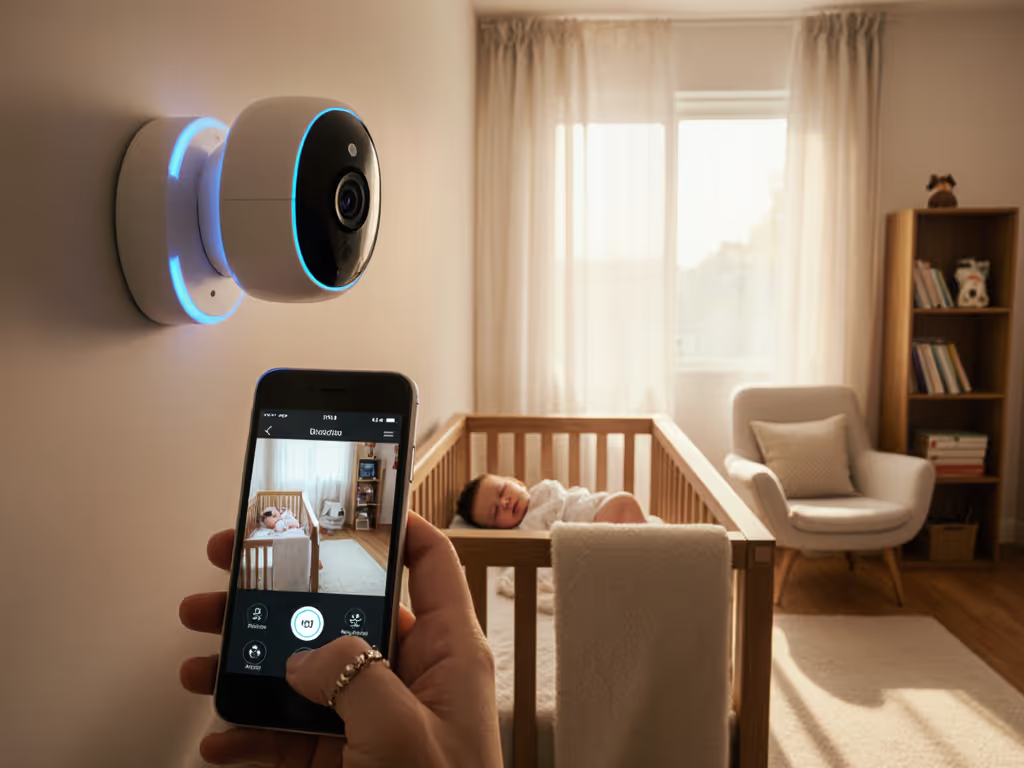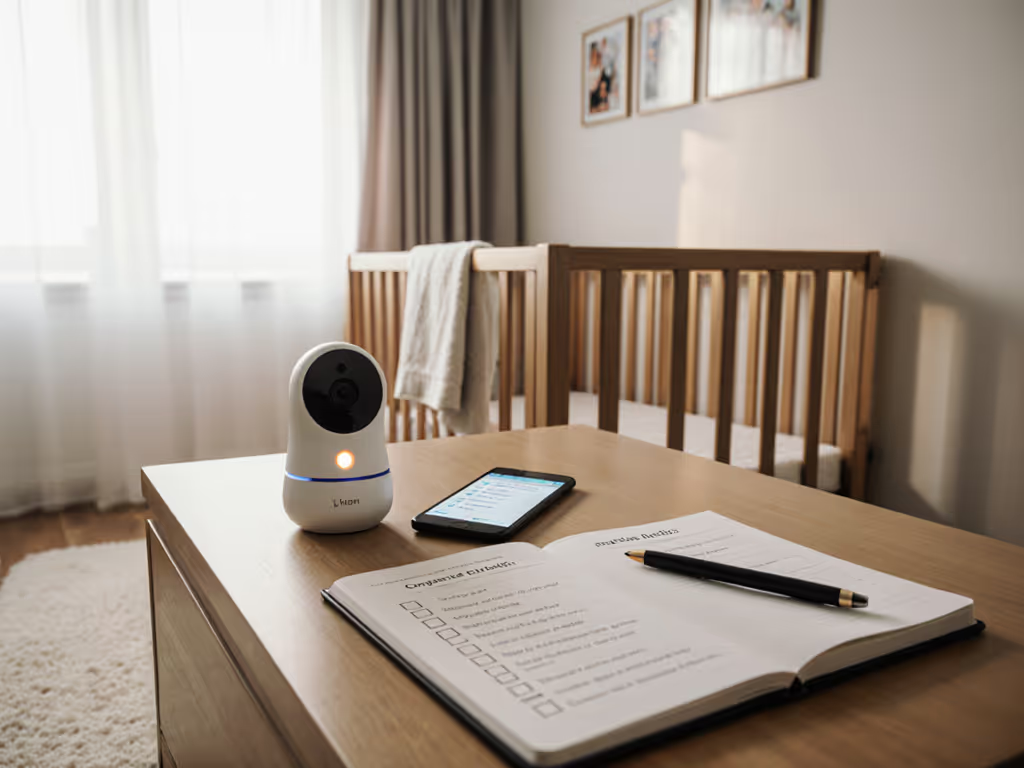
Why Use Baby Monitors: The Essential Guide
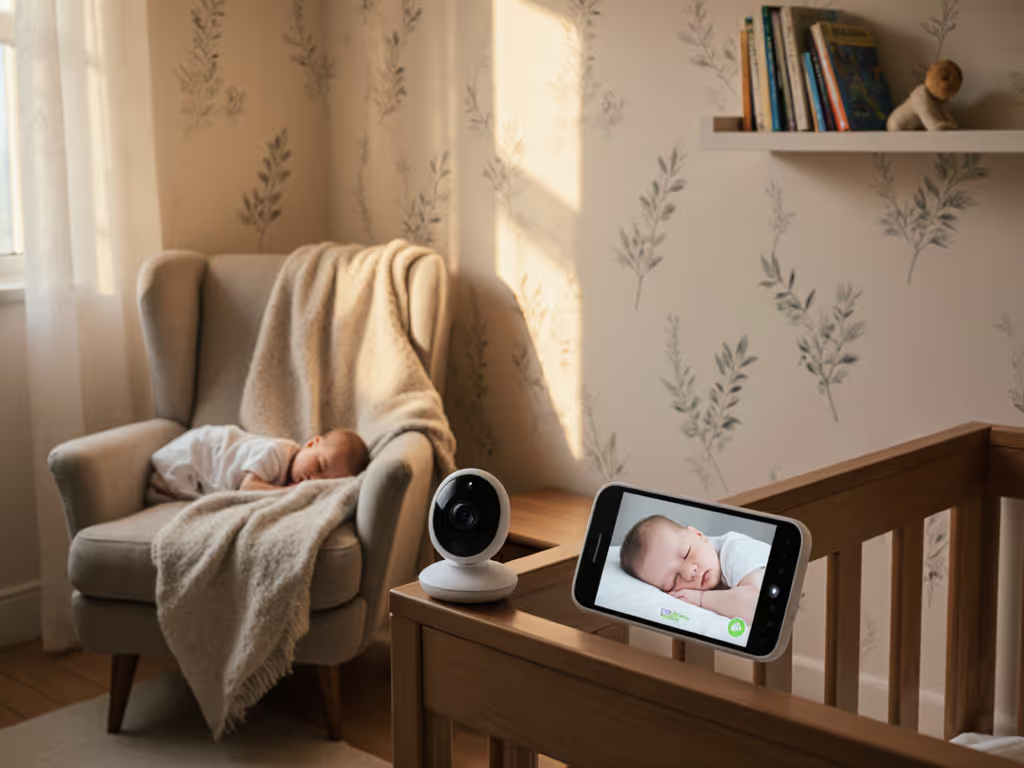
Did you know that the global baby monitor market is set to surpass $2 billion by 2027? With parents placing safety at the top of their priorities, these devices have become much more than just a way to hear your baby’s cry. Many now offer advanced features that let families monitor breathing, track temperature, and stay connected around the clock. Understanding baby monitors can help you choose the best option for peace of mind and your child’s well-being.
Key Takeaways
| Point | Details |
|---|---|
| Purpose of Baby Monitors | Baby monitors enhance child safety by providing real-time monitoring of infants, including audio, video, and movement tracking. |
| Types of Baby Monitors | The main categories include audio, video, and movement monitors, each catering to different parental needs and features. |
| Security Concerns | Internet-connected monitors present privacy risks, necessitating proactive measures like robust encryption and regular updates. |
| Choosing the Right Monitor | Selection should consider home layout, budget, essential features, and long-term usability to ensure effective and secure monitoring. |
Defining Baby Monitors And Their Purpose
Baby monitors are sophisticated technological tools designed to provide parents with real-time insights into their infant's environment and well-being. These electronic devices serve as an extended set of eyes and ears, allowing caregivers to remotely observe and listen to their children when they are not physically present in the same room.
At their core, baby monitors help parents ensure their child's safety by transmitting audio and/or video signals from the baby's room to a portable receiver or smartphone app. The primary functions typically include:
- Tracking infant movements and sounds
- Monitoring sleep patterns
- Detecting potential distress or discomfort
- Providing peace of mind for parents and caregivers
Modern baby monitors have evolved far beyond simple audio transmission. Many now incorporate advanced features like temperature monitoring, two-way audio communication, night vision capabilities, and even breathing and movement tracking. This technological progression reflects a growing understanding of parents' desire for comprehensive safety and connection with their children, even when physically separated.
Types Of Baby Monitors And Their Features
Navigating the world of baby monitors reveals a diverse landscape of technological solutions designed to meet different parental needs and home environments. Understanding the primary types of monitors helps parents select the most appropriate device for their specific situation and comfort level.
Based on current research, three main categories of baby monitors dominate the market:
- Audio Monitors: The most basic type, transmitting sound from the baby's room to a receiver. Ideal for parents seeking simple, budget-friendly monitoring.
- Video Monitors: Provide visual and audio feeds, allowing parents to see their child in real time. These often include features like zoom, night vision, and wide-angle viewing.
- Movement Monitors: Advanced devices that track an infant's breathing patterns and physical movements, offering an additional layer of safety monitoring.
Each monitor type comes with unique technological capabilities. Audio monitors typically use radio frequency or digital transmission to minimize interference. Video monitors now integrate smartphone connectivity, enabling parents to check on their child from anywhere. Movement monitors often include sensor pads placed under the mattress or wearable devices that alert parents to any irregular breathing or lack of movement, providing an extra sense of security for high-risk or premature infants.
Here's a comparison of the main types of baby monitors and their features:
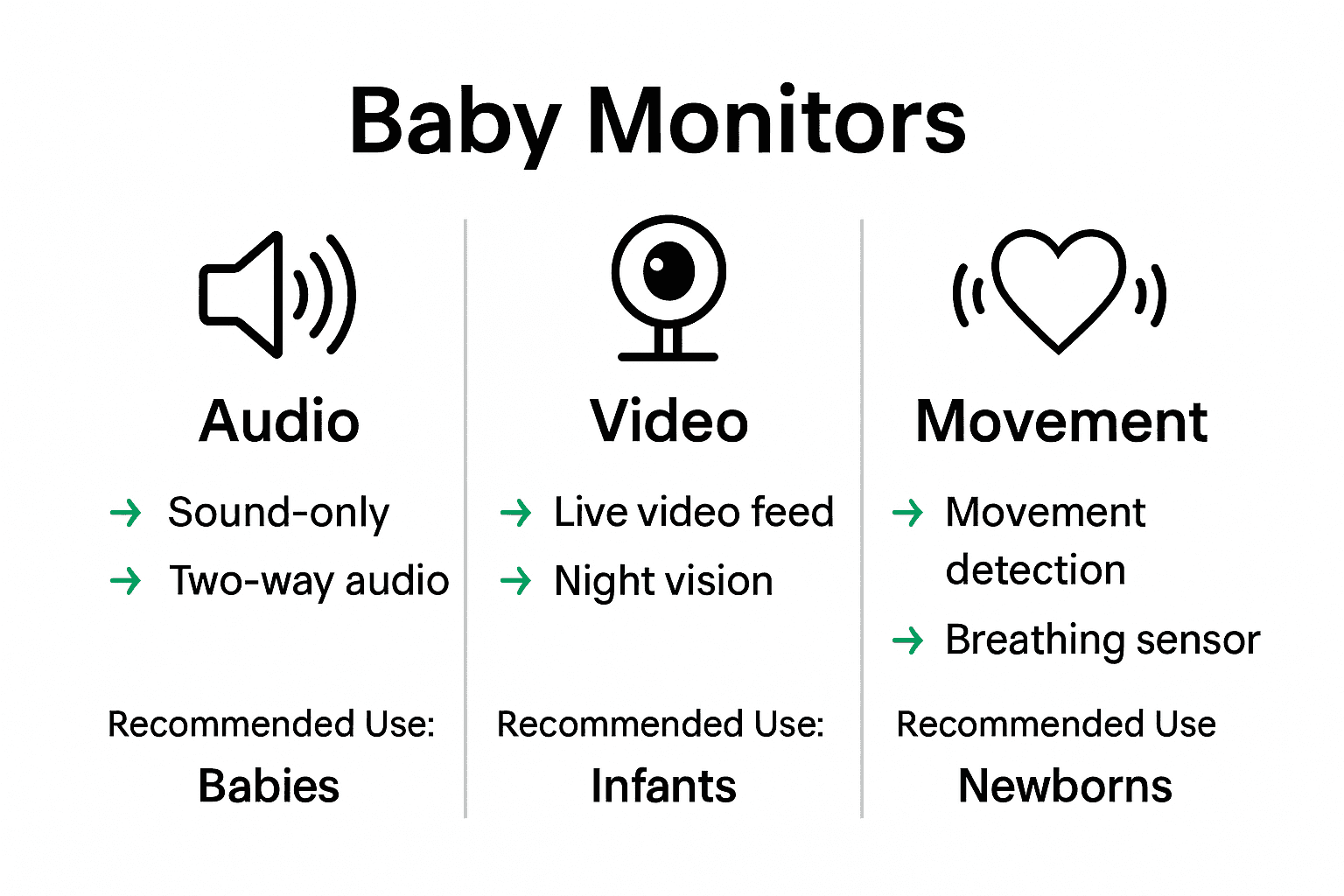
| Type of Monitor | Key Features | Ideal For |
|---|---|---|
| Audio Monitor | Sound transmission<br>Simple setup<br>Low cost | Budget-conscious parents<br>Basic needs |
| Video Monitor | Live video feed<br>Night vision<br>Smartphone connectivity | Parents wanting visual check-ins<br>Modern homes |
| Movement Monitor | Tracks breathing/movement<br>Alerts for irregularities<br>Sensor pads or wearables | High-risk infants<br>Parents seeking advanced safety |
How Baby Monitors Enhance Child Safety
Child safety is a paramount concern for parents, and baby monitors have emerged as critical technological tools that provide real-time protection and peace of mind. These devices serve as an electronic guardian, offering continuous monitoring that extends a parent's protective capabilities beyond physical presence.
The safety enhancements provided by baby monitors are multifaceted:
- Immediate Threat Detection: Quick identification of potential dangers like suffocation risks, unusual movements, or breathing irregularities
- Rapid Response: Enabling parents to quickly intervene if a child is in distress or experiencing health complications
- Sleep Environment Monitoring: Tracking room temperature, humidity, and ambient noise levels that might impact infant well-being
- Mobility Support: Allowing parents to supervise their child while simultaneously managing household tasks
Modern baby monitors go beyond simple observation, integrating advanced sensor technologies that can detect subtle changes in an infant's condition. Some sophisticated models can track breathing patterns, heart rate, and even provide alerts for potential health anomalies. This technological evolution transforms baby monitors from passive observation tools to active safety systems, providing parents with a comprehensive monitoring solution that supports their child's health and security.
Privacy, Security, And Data Protection Risks
Internet-connected baby monitors have introduced a complex landscape of digital security challenges that parents must carefully navigate. While these technological devices offer unprecedented monitoring capabilities, they simultaneously expose families to potential privacy vulnerabilities that require proactive management and understanding.
The primary security risks associated with modern baby monitors include:
- Unauthorized Network Access: Hackers potentially intercepting video or audio streams
- Data Vulnerability: Personal information and home network details being exposed
- Inadequate Encryption: Weak security protocols making devices easy to compromise
- Geographical Tracking: Location and household patterns potentially being revealed
Parents can mitigate these risks by implementing strategic protective measures. This includes selecting monitors with robust encryption, changing default passwords, using secure WiFi networks, and regularly updating device firmware. Advanced models now incorporate enhanced security features like two-factor authentication, local storage options, and end-to-end encryption, providing parents with more control over their monitoring ecosystem. Understanding these risks transforms device selection from a simple purchasing decision into a critical privacy protection strategy.
Choosing The Right Baby Monitor For Your Home
Selecting the perfect baby monitor is a critical decision that requires careful consideration of your unique household dynamics, living space, and specific monitoring needs. The ideal device should seamlessly integrate into your family's lifestyle while providing comprehensive safety and peace of mind.
Key factors to evaluate when choosing a baby monitor include:
- Home Layout: Assess your home's size, wall thickness, and potential signal interference zones
- Budget Range: Determine your financial investment capacity for monitoring technology
- Specific Features Needed: Prioritize must-have capabilities like night vision, two-way audio, or movement tracking
- Connectivity Requirements: Consider WiFi-enabled versus local transmission options
- Long-Term Usability: Select a monitor that can adapt as your child grows
Parents should approach monitor selection as a strategic investment in their child's safety. This means looking beyond immediate features and considering long-term performance, privacy protections, and technological adaptability. Some advanced monitors now offer modular designs that can transition from infant to toddler stages, providing extended value and flexibility. Ultimately, the right baby monitor acts as a trusted technological partner, offering reliable monitoring while respecting your family's unique privacy and communication needs.
Discover Confident, Secure Baby Monitoring with Trusted Guidance
Feeling anxious about your child's safety or concerned about digital privacy after learning how modern baby monitors work? You are not alone. The challenges of home layout, security risks with internet-connected devices, and choosing between features like movement tracking or night vision can feel overwhelming. Many parents share your goal of finding a reliable and safe baby monitor that truly fits their home and privacy standards.
Take the next step with expertise you can trust. Visit Baby Monitors for Parents for clear, unbiased advice and practical buying guides. Explore curated product reviews including detailed insights on features such as WiFi versus local connectivity, privacy protections, and ease of use. Ready to feel more secure and informed about your family's monitoring solution? Check out our in-depth comparison guides and make your safest, smartest baby monitor choice today.
Frequently Asked Questions
What are baby monitors and what purpose do they serve?
Baby monitors are electronic devices designed to provide real-time insights into an infant's environment and well-being, allowing parents to remotely observe and listen to their child when they are not in the same room.
What types of baby monitors are available?
There are three main types of baby monitors: audio monitors, which transmit sound; video monitors, which provide live visual and audio feeds; and movement monitors, which track an infant's breathing and movements for added safety.
How do baby monitors enhance child safety?
Baby monitors enhance child safety by offering immediate threat detection, rapid response capabilities for parents, monitoring of the sleep environment, and mobility support, allowing parents to manage other tasks while keeping an eye on their child.
What security risks should parents consider with internet-connected baby monitors?
Parents should be aware of risks such as unauthorized network access, data vulnerability, inadequate encryption, and geographical tracking. Implementing strong security measures like robust encryption and secure WiFi networks can help mitigate these risks.

